The only sacrifice He ever accepted was His own son, Jesus, who willingly gave his life for our salvation. On this holy weekend, let us be thankful that there are still people in the world who believe in this message.
Pandra Selivanov
Christians Answer on Easter to Jesus’ Question, ‘But Who Do You Say that I Am?’
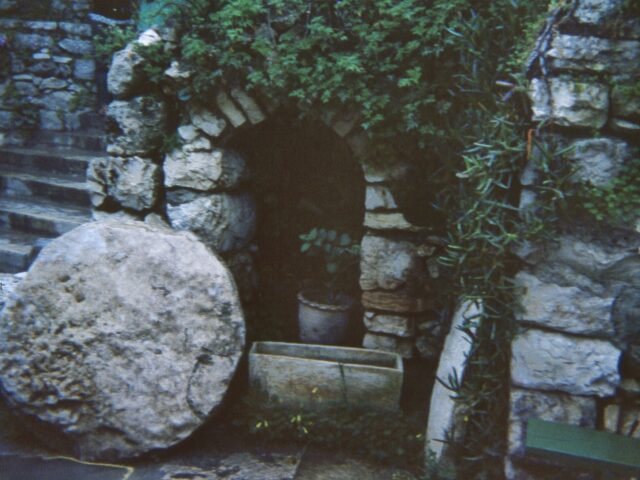
“There is therefore now no condemnation for those who are in Christ Jesus.”—Romans 8:1 (ESV).
Christians celebrate Easter today, marking what their faith considers the turning point of history: that Jesus Christ paid the penalty for sin by his death on a cross on Good Friday, and God showed that this sacrifice forever justified those who believe by raising Jesus from the dead, highlighting a historical debate of a “trilemma” over a question Jesus asked 2,000 years ago.
This cornerstone of the Christian faith is distinctive amongst the world’s religions. Christianity teaches that a human being is reconciled to his creator and made ready for eternity not on the basis of that person’s efforts or the mastery of mysterious secrets, but by a childlike embrace of believing as a historical fact that Jesus of Nazareth was bodily resurrected and lives forever, repenting of living for themselves and turning to God for mercy.
Christianity is also distinctive among major religions in that its founder claimed to be divine, God himself who took on human form, instead of a messenger of God. Jesus’ moral teachings are intertwined with his claim to have divine authority over all humanity, to set forth the laws that govern every person, and that at the end of human history there would come a day when he would be the divine judge of every person.
While many cite Jesus as a great moral teacher or religious philosopher, the claim of a physical resurrection presents what Christian apologists call a “trilemma:” Jesus claimed to be God himself, the divine Son of God the Father, leading countless people to suffer persecution and even death as a result, in addition to his own execution on Good Friday. Jesus’ claim of being the divine equal of God the Father – and to be “One with the Father” – is what ultimately led to his death.
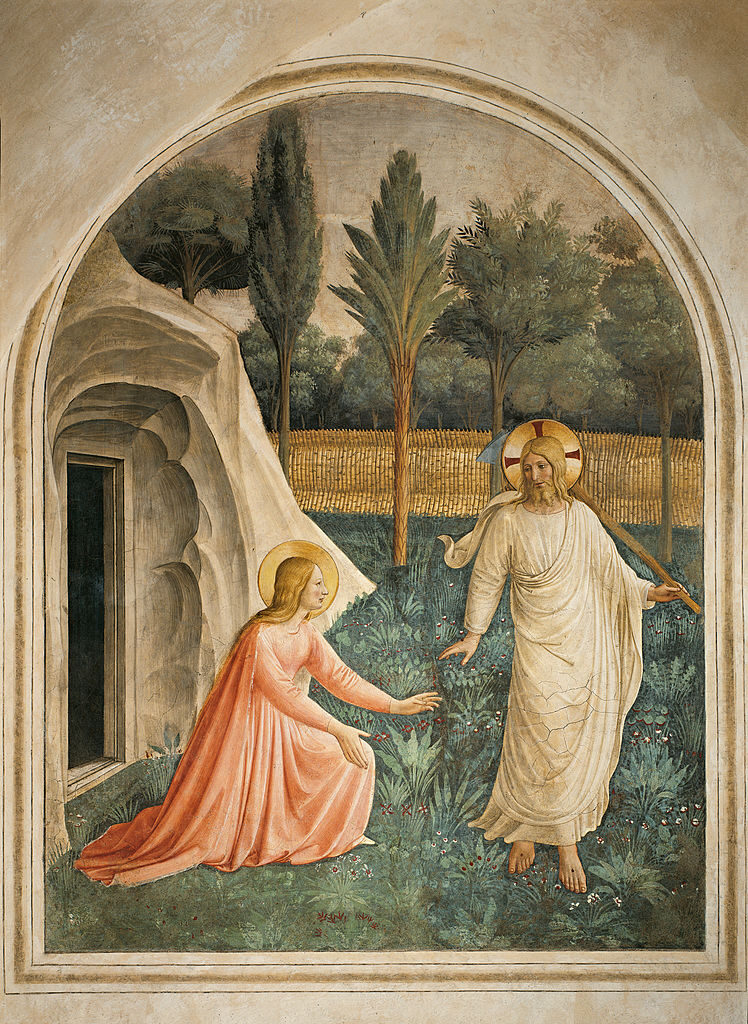
Noli me tangere, fresco by Guido di Pietro (Piero) known as Beato Angelico, 1438 – 1446 about, 15th Century. Jesus Christ risen Mary Magdalene tomb grass garden trees. (GettyArchive)
The first option of the trilemma is that if Jesus was not who he claimed to be, then he was off-the-charts insane by thinking that he had existed from eternity past, that through him the entire universe was created, and was during his earthly life the Almighty deity, with power over the wind and waves, power to multiple food from bread and fish to feed thousands, and power to heal the sick and even raise the dead to life. If someone believes that and it happens not to be true, then that person is a lunatic.
The second option of the trilemma is that if a man claims to be God when he knows he is not, and leads multitudes of well-meaning people to suffer all manner of loss – including for some even death – to follow him, calling on people to leave everything to become his disciples, then that man is not a great moral teacher. Instead, he is a sadistic liar.
The third option of the trilemma is that Jesus is who he actually claimed to be. Christians say that God proved this by raising Jesus from the dead on Easter Sunday.
So the “trilemma” that Christian evangelists talk about is that Jesus was either a “lunatic, liar, or Lord.” Christians obviously argue for the third choice, and have for more 2,000 years.
At a time when the moral teachings of the Bible are increasingly rejected – and increasingly reviled in a militant fashion that imposes real costs on Christians who attempt to be faithful – touting Jesus as a moral philosopher and affiliating with a church becomes an increasingly risky proposition. As a consequence, more people are facing that trilemma, attempting to answer the question that Jesus posed to the Apostle Peter at Caesarea Philippi in Matthew 16:15, “But who do you say that I am?”
Peter responded with his famous reply in the Bible in Matthew 16:16, “You are the Christ, the Son of the living God.” Peter spent the next 30 years of his life suffering for teaching what he believed, and was ultimately executed for it. Countless others have done likewise in the 20 centuries since then.
Peter did so because of the hope in his own resurrection one day that another apostle, Paul, would later write in Romans 8:11, “If the Spirit of him who raised Jesus from the dead dwells in you, he who raised Christ Jesus from the dead will also give life to your mortal bodies.”
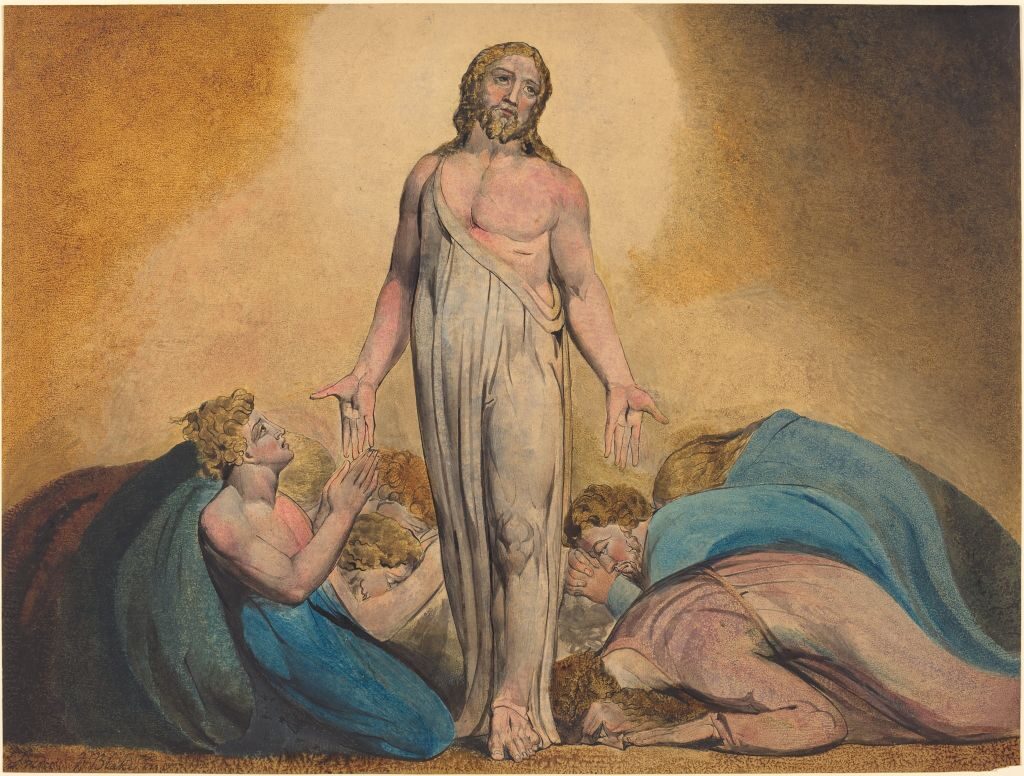
Christ Appearing to His Disciples After the Resurrection, circa 1795. Artist William Blake. (Heritage Art/Heritage Images via Getty)
Because of Paul’s belief, he gave us a respected position in Jewish society for a lifetime of persecution and deprivation as he spread the gospel about Jesus, and like Peter was ultimately executed for it.
At a time when holding a middle ground regarding Christianity is become untenable for many, debates intensify over Jesus’ question, “But who do you say that I am?”
“Christ the sure and steady anchor, as we face the wave of death; when these trials give way to glory, as we draw our final breath. We will cross that great horizon, clouds behind and life secure; and the calm will be the better for the storms that we endure. Christ, the shore of our salvation, ever faithful, ever true; we will hold fast to the anchor, it shall never be removed.”—Matt Boswell, Christ the Sure and Steady Anchor (2015)
Breitbart News senior legal contributor Ken Klukowski is a lawyer who served in the White House and Justice Department.
To Rightly Grasp the Resurrection, One Must First Understand Sin
In one of my favorite songs—Worlds Apart by Jars of Clay—singing of the death of Jesus, the lyrics ask (at about the 2:29 mark in the linked video) “Did you really have to die for me?” The answer, of course, is a resounding “Yes!”
One of the most important questions in the history of the universe is “Why did Jesus have to die?” This is especially the case as we are in the throes of what some are referring to as the “Negative World” era, where “Everybody Wants to Rule Their World.”
Aaron Renn describes the “Negative World” (2014–the present) as a period when a culture adopts a negative view of Christianity, “particularly in the elite domains of society.” Mr. Renn adds that, in the Negative World:
Christian morality is expressly repudiated and seen as a threat to the public good and the new public moral order. Subscribing to Christian moral views or violating the secular moral order brings negative consequences.
Of course, this is exactly what we see in America today, especially where the “woke” rule. Much of the disdain for Christianity that we see today—and throughout time—is due to what God has had to say and do about sin. Far too many Americans today have refused to close their minds on matters that have been settled for all time, and instead have decided to adopt their own moral code (especially on matters within the sexual realm).
We are a nation littered with those who are deciding for themselves what is good, what is truth, and what is sin. We have largely abandoned the notion that we are sinners in need of a Savior. Thus, unsurprisingly, few Americans truly understand the reasons behind the life, death, and resurrection of Jesus.
The late-great Oswald Chambers provides one of the best descriptions of why Jesus went to the cross:
The Cross of Christ is the revealed truth of God’s judgment on sin…There is nothing in time or eternity more absolutely certain and irrefutable than what Jesus Christ accomplished on the Cross— He made it possible for the entire human race to be brought back into a right-standing relationship with God. He made redemption the foundation of human life; that is, He made a way for every person to have fellowship with God.
The Cross was not something that happened to Jesus— He came to die; the Cross was His purpose in coming. He is ‘the Lamb slain from the foundation of the world’ (Revelation 13:8). The incarnation of Christ would have no meaning without the Cross. Beware of separating ‘God was manifested in the flesh…’ from ‘…He made Him…to be sin for us…’ (1 Timothy 3:16 ; 2 Corinthians 5:21). The purpose of the incarnation was redemption. God came in the flesh to take sin away, not to accomplish something for Himself. The Cross is the central event in time and eternity, and the answer to all the problems of both.
One of my favorite Scriptures that explains the death of Jesus is near the end of the first chapter of the book of Colossians. Colossians 1:19-20 reads:
For God was pleased to have all his fullness dwell in him [Jesus], and through him to reconcile to himself all things, whether things on earth or things in heaven, by making peace through his blood, shed on the cross.
In other words, Jesus was, in the words of C.S. Lewis, “The Perfect Penitent.” As Lewis puts it:
We are told that Christ was killed for us, that His death has washed out our sins, and that by dying He disabled death itself. That is the formula. That is Christianity. That is what has to be believed.
Christ dying for our sins is an amazing—and necessary—act of love and sacrifice, but it is not the end of the matter. Just as important as Christ dying for our sins is His resurrection. The physical resurrection of Jesus is the cornerstone of Christianity. British theologian Michael Green said it well when he noted, “Without faith in the resurrection there would be no Christianity at all.”
The facts of Jesus’s birth, life, death, and resurrection all are, of course, central to Christianity. For millennia, each of these events has been celebrated, studied, taught, and preached. Most everyone—from the fervently faithful, to the lukewarm, to the “near Christian”, to those outside Christianity—at least admire the loving life, work, and words of Jesus. However, for a complete understanding of the events of Jesus’s life—especially His death and resurrection—one must seek to understand sin and its sorrowful, destructive, and deadly effect upon humanity.
Unless you have a proper understanding of sin—especially the sin in your own life—you don’t really understand why Jesus came into this world, why He said the things He said, why He did the things He did, and why He died and rose to life again. The first act of Jesus’s public ministry was His baptism by John. As Jesus came to the Jordan River, John declared (John 1:29), “Behold, the Lamb of God, who takes away the sin of the world!”
Since the first humans decided that they wanted to “be like God,” the world has been plagued—literally cursed—by sin. More so than any other human who has walked this planet, Jesus knew—and knows—what we need most. He understood perfectly the sin-sickness of humanity and that He alone had—and still has—the cure.
People don’t like hearing that things in their life need to change: that they are on the wrong path; that the things they are currently enjoying are really quite evil and deadly. In other words, people don’t like being told that they need to “repent.”
As I noted several years ago, the greatest lie ever told is that there is no God. The second greatest lie ever told is that the devil does not exist. The third greatest lie ever told is that your (and my) sin is not really sin. One of the greatest debates within the church today surrounds the question of what is sin. If we can’t answer that question well and accurately, then we will fall short of understanding and appreciating all that Jesus did for us.
As Oswald Chambers reveals above, Jesus came for no other reason than to redeem us, to save us. Save us from what? From the sin that leads to death, hell, and eternal separation from God. We don’t get to come to God and accept Jesus on our own terms. It must be unconditional surrender. We must be willing to lay down everything that is an affront to God. He created us, He sustains us, and He alone can save us.
The ministry of God—feeding the hungry, clothing the naked, healing the sick—should never be separated from the message of God—to repent of our sin and believe that Jesus was who He claimed to be: the Son of God and the savior of the world. The ministry of God and the message of God—both together complete the mission of God. In other words, God became man not simply to improve us, or to help us out of a jam, or to give us what we ask for, or to make us feel better, but to make us into new creatures.
Happy Resurrection Day!
Trevor Grant Thomas
At the Intersection of Politics, Science, Faith, and Reason.
www.trevorgrantthomas.com
Trevor is the author of the The Miracle and Magnificence of America
tthomas@trevorgrantthomas.com
VIDEO DOCS
Dead, Twice Buried, and An Empty Tomb?
The Historical Truth about the Last Supper--At Last!
Mark Is our Earliest Jesus Story--How We Know and Why it Matters!
The Death of Jesus Christ by Anne Catherine Emmerich

Below is an excerpt of a private revelation of the death of Jesus Christ by Blessed Anne Catherine Emmerich (1774-1824), a Catholic mystic. Emmerich was instructed by church authorities to write down her revelations and they were compiled into the book The Dolorous Passion of Our Lord Jesus Christ, upon which the popular movie The Passion of the Christ was based. Emmerich's writings about Christ's passion and death are not viewed by the Catholic Church as literally true or in any way an addenda to the Gospels. They are private revelations that may be read by the faithful with devotion, much as one might read a religious novel.
Chapter XLV
Fifth, Sixth, and Seventh Words of Jesus on the Cross—His Death
Jesus was almost fainting; his tongue was parched, and he said: ‘I thirst.’ The disciples who were standing round the Cross looked at him with the deepest expression of sorrow, and he added, ‘Could you not have given me a little water?’ By these words he gave them to understand that no one would have prevented them from doing so during the darkness.
John was filled with remorse, and replied: ‘We did not think of doing so, O Lord.’ Jesus pronounced a few more words, the import of which was: ‘My friends and my neighbours were also to forget me, and not give me to drink, that so what was written concerning me might be fulfilled.’ This omission had afflicted him very much.
The disciples then offered money to the soldiers to obtain permission to give him a little water: they refused to give it, but dipped a sponge in vinegar and gall, and were about to offer it to Jesus, when the centurion Abenadar, whose heart was touched with compassion, took it from them, squeezed out the gall, poured some fresh vinegar upon it, and fastening it to a reed, put the reed at the end of a lance, and presented it for Jesus to drink.
I heard our Lord say several other things, but I only remember these words: ‘When my voice shall be silent, the mouths of the dead shall be opened.’ Some of the bystanders cried out: ‘He blasphemeth again.’ But Abenadar compelled them to be silent.
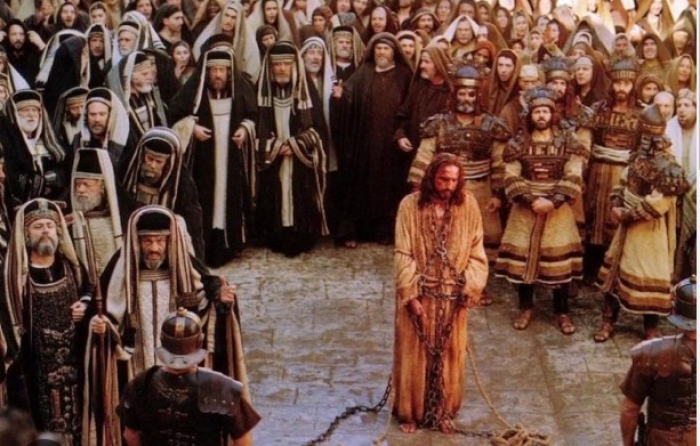
The hour of our Lord was at last come; his death-struggle had commenced; a cold sweat overspread every limb. John stood at the foot of the Cross, and wiped the feet of Jesus with his scapular. Magdalen was crouched to the ground in a perfect frenzy of grief behind the Cross. The Blessed Virgin stood between Jesus and the good thief, supported by Salome and Mary of Cleophas, with her eyes riveted on the countenance of her dying Son.
Jesus then said: 'It is consummated;’ and, raising his head, cried out in a loud voice, ‘Father, into thy hands I commend my spirit.’ These words, which he uttered in a clear and thrilling tone, resounded through heaven and earth; and a moment after, he bowed down his head and gave up the ghost.
I saw his soul, under the appearance of a bright meteor, penetrate the earth at the foot of the Cross. John and the holy women fell prostrate on the ground. The centurion Abenadar had kept his eyes steadfastly fixed on the disfigured countenance of our Lord, and was perfectly overwhelmed by all that had taken place.
When our Lord pronounced his last words, before expiring, in a loud tone, the earth trembled, and the rock of Calvary burst asunder, forming a deep chasm between the Cross of our Lord and that of Gesmas. The voice of God—that solemn and terrible voice—had re-echoed through the whole universe; it had broken the solemn silence which then pervaded all nature. All was accomplished.
The soul of our Lord had left his body: his last cry had filled every breast with terror. The convulsed earth had paid homage to its Creator: the sword of grief had pierced the hearts of those who loved him.
This moment was the moment of grace for Abenadar; his horse trembled under him; his heart was touched; it was rent like the hard rock; he threw his lance to a distance, struck his breast, and cried out: ‘Blessed be the Most High God, the God of Abraham, of Isaac, and of Jacob; indeed this Man was the Son of God!’ His words convinced many among the soldiers, who followed his example, and were likewise converted.
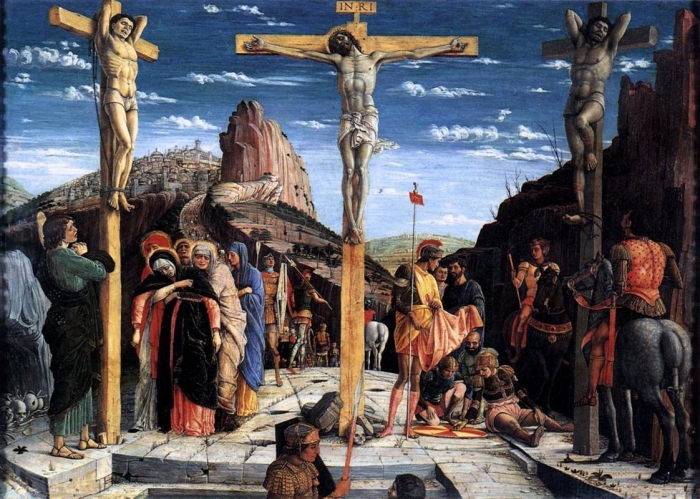
Abenadar became from this moment a new man; he adored the true God, and would no longer serve his enemies. He gave both his horse and his lance to a subaltern of the name of Longinus, who, having addressed a few words to the soldiers, mounted his horse, and took the command upon himself.
Abenadar then left Calvary, and went through the Valley of Gihon to the caves in the Valley of Hinnom, where the disciples were hidden, announced the death of our Lord to them, and then went to the town, in order to see Pilate.
No sooner had Abenadar rendered public testimony of his belief in the divinity of Jesus, than a large number of soldiers followed his example, as did also some of the bystanders, and even a few Pharisees. Many struck their breasts, wept, and returned home, while others rent their garments, and cast dust on their heads, and all were filled with horror and fear. John arose; and some of the holy women who were at a short distance came up to the Blessed Virgin, and led her away from the foot of the Cross.
When Jesus, the Lord of life and death, gave up his soul into the hands of his Father, and allowed death to take possession of his body, this sacred body trembled and turned lividly white; the countless wounds which were covered with congealed blood appeared like dark marks; his cheeks became more sunken, his nose more pointed, and his eyes, which were obscured with blood, remained but half open.
He raised his weary head, which was still crowned with thorns, for a moment, and then dropped it again in agony of pain; while his parched and torn lips, only partially closed, showed his bloody and swollen tongue.
At the moment of death his hands, which were at one time contracted round the nails, opened and returned to their natural size, as did also his arms; his body became stiff, and the whole weight was thrown upon the feet, his knees bent, and his feet twisted a little on one side.
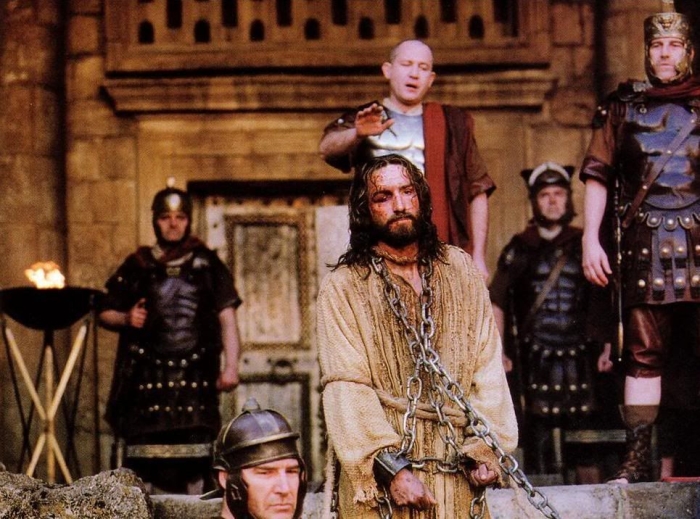
What words can, alas, express the deep grief of the Blessed Virgin? Her eyes closed, a death-like tint overspread her countenance; unable to stand, she fell to the ground, but was soon lifted up, and supported by John, Magdalen, and the others.
She looked once more upon her beloved Son—that Son whom she had conceived by the Holy Ghost, the flesh of her flesh, the bone of her bone, the heart of her heart—hanging on a cross between two thieves; crucified, dishonoured, condemned by those whom he came on earth to save; and well might she at this moment be termed ‘the queen of martyrs.’
... It was about three o’clock when Jesus expired. The Pharisees were at first much alarmed at the earthquake; but when the first shock was over they recovered themselves, began to throw stones into the chasm, and tried to measure its depth with ropes. Finding, however, that they could not fathom its bottom, they became thoughtful, listened anxiously to the groans of the penitents, who were lamenting and striking their breasts, and then left Calvary.
Many among the spectators were really converted, and the greatest part returned to Jerusalem perfectly overcome with fear. Roman soldiers were placed at the gates, and in other principal parts of the city, to prevent the possibility of an insurrection.
Cassius remained on Calvary with about fifty soldiers. The friends of Jesus stood round the Cross, contemplated our Lord, and wept; many among the holy women had returned to their homes, and all were silent and overcome with grief.
Chapter XLVI
The Earthquake—Apparitions of the Dead in Jerusalem
I saw the soul of Jesus, at the moment he expired, appear under the form of a bright orb, and accompanied by angels, among whom I distinguished the angel Gabriel penetrate the earth at the foot of the Cross.
I likewise saw these angels cast a number of evil spirits into the great abyss, and I heard Jesus order several of the souls in Limbo to re-enter the bodies in which they once dwelt, in order that the sight might fill sinners with a salutary terror, and that these souls might render a solemn testimony to his divinity.
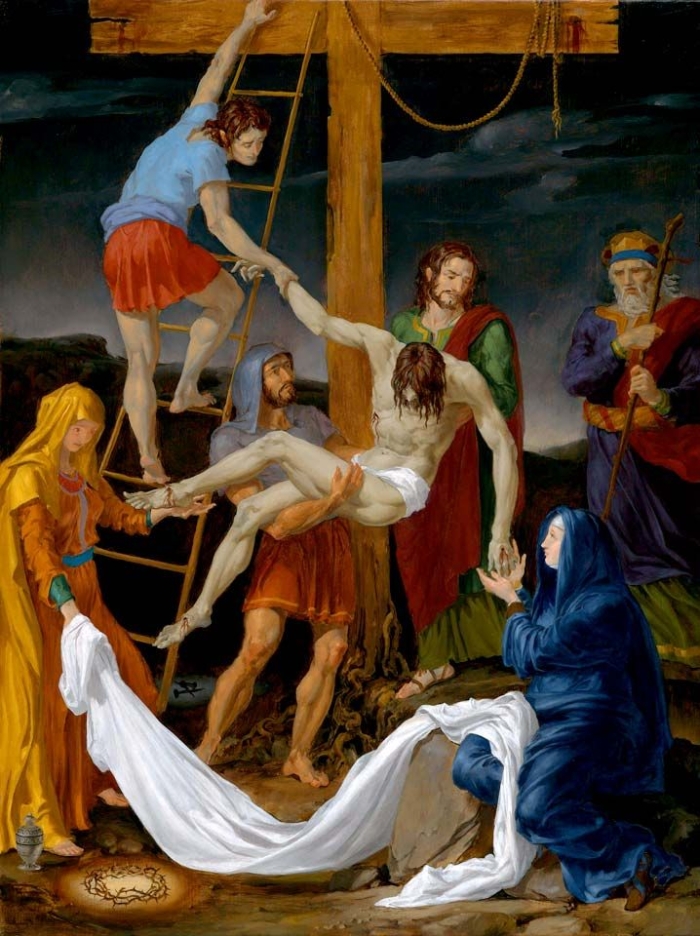
The earthquake which produced the deep chasm at Calvary did much damage in different parts of Palestine, but its effects were even more fatal in Jerusalem. Its inhabitants were just beginning to be a little reassured by the return of light, when their terror was reawakened with double force by the shocks of the earthquake, and the terrible noise and confusion caused by the downfall of houses and walls on all sides, which panic was still farther increased by the sudden appearance of dead persons, confronting the trembling miscreants who were flying to hide themselves, and addressing them in the most severe and reproachful language.
The High Priests had recommenced the sacrifice of the Paschal lamb (which had been stopped by the unexpected darkness), and they were triumphing at the return of light, when suddenly the ground beneath them trembled, the neighbouring buildings fell down, and the veil of the Temple was rent in two from the top to the bottom. Excess of terror at first rendered those on the outside speechless, but after a time they burst forth into cries and lamentations.
... [E]very one endeavoured to fly as quickly as possible. And well might they fly, well might they fear and tremble; for in the midst of the multitude there suddenly appeared persons who had been dead and buried for many years!
... Whilst these things were going on in the Temple, the confusion and panic were not less in Jerusalem. Dead persons were walking about, and many walls and buildings had been shaken by the earthquake, and parts of them fallen down.
The superstition of Pilate rendered him even more accessible to fear; he was perfectly paralysed and speechless with terror; his palace was shaken to the very foundation, and the earth quaked beneath his feet. He ran wildly from room to room, and the dead constantly stood before him, reproaching him with the unjust sentence he had passed upon Jesus.
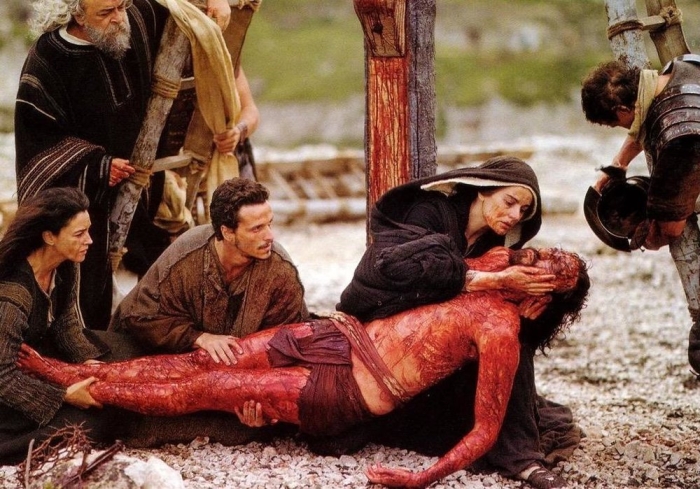
... More than a hundred persons who had died at different epochs re-entered the bodies they had occupied when on earth, made their appearance in different parts of Jerusalem, and filled the inhabitants with inexpressible consternation. Those souls which had been released by Jesus from Limbo uncovered their faces and wandered to and fro in the streets, and although their bodies were the same as those which they had animated when on earth, yet these bodies did not appear to touch the ground as they walked.
They entered the houses of their descendants, proclaimed the innocence of Jesus, and reproved those who had taken part in his death most severely. I saw them passing through the principal streets; they were generally in couples, and appeared to me to glide through the air without moving their feet.
The countenances of some were pale; others of a yellow tint; their beards were long, and their voices sounded strange and sepulchral. Their grave-clothes were such as it was customary in use at the period of their decease.
When they reached the place where sentence of death was proclaimed on Jesus before the procession started for Calvary, they paused for a moment, and exclaimed in a loud voice: ‘Glory be to Jesus for ever and ever, and destruction to his enemies!’
Towards four o’clock all the dead returned to their graves. The sacrifices in the Temple had been so interrupted, and the confusion caused by the different prodigies was so great, that very few persons ate the Paschal lamb on that evening.
To read The Dolorous Passion of Our Lord Jesus Christ online, click here.
Reflections on Easter
An examination of the best-documented event of ancient history.

While Christmas—the birth date of the Messiah, Jesus Christ—marks the watershed of splitting calendar history into two epochs, B.C. and A.D., Easter marks the day and commemorates actual events, however miraculous, that followed the crucifixion and death of Christ that transformed the world forever.
But how and why would that torturous event and extreme sorrow associated with the death of the messiah affect eternity in a positive way? Why should Easter be a joyful time? The answer is neither elusive nor complicated.
There are many religions of the world going back thousands of years. But only one of them, Christianity, has a founder who professed to be the Messiah—the son of God—who provided irrefutable proof of who he was by conquering death through resurrection. Easter is the celebration of Christ’s resurrection.
Christ is absolutely unique in being the only person in history who was pre-announced starting a thousand years before he was born, with over 100 prophetic accounts from 18 different prophets from the Old Testament between the tenth and the fourth centuries BC—predicting the specifics of his coming birth, life, and death. Hundreds of years later, the details of Christ’s birth, life, betrayal, and death validated those prophecies in surprisingly accurate and minute detail. One thousand years BC, David prophetically wrote about the crucifixion of Christ at a time crucifixion was unknown as a means of execution.
Every other consequential person of history came into the world to live. The death of other religious leaders—such as Abraham, Moses, Buddha, Mohammad, and Confucius—brought an anticlimactic end to their lives and their work.
But Christ came into the world as God’s son in order to die and pay the price for man’s sin. His sacrifice was the ultimate climax of his life, done for the benefit of all mankind—opening the way to eternal life in heaven for all who believe.
Of the five major world religions built on personalities, only Christianity claims its founder is still alive, having overcome death through resurrection. No Jew ever believed that, after Abraham died and was interred, his tomb ever became empty. After Buddha died, no disciple claimed that he or she saw or spoke to him again.
As for Mohammed, the founder of Islam, there is no trace of his appearing to his disciples or followers after he died. His occupied tomb is located in Medina and is visited by tens of thousands of devout Muslims every year.
Christ was unique in giving up his life as a sacrifice to fulfill why he came into the world. Christ showed the highest standard of love possible, through compassion for outcasts and healing the afflicted, by his teachings, and ultimately in making the ultimate sacrifice—giving his life to rescue and save mankind. Then, to provide “seeing is believing” evidence, God brought Jesus back from being dead in a tomb to being alive—resurrected—so people would have living proof of who he was.
The New Testament provides accounts from multiple sources who witnessed Jesus firsthand after the resurrection. In fact, Jesus made at least ten separate appearances to his disciples between the resurrection and his ascension into Heaven, over a period of 40 days. Some of those appearances were to individual disciples, some were to several disciples, and once to some 500 at one time.
Particularly noteworthy is that there were no accounts of witnesses who came forth and disputed these appearances or called it a “hoax.” Not a single one. Nor do we find any historical record of any witness accounts that were contradictory.
While there are skeptics of the biblical Jesus, there’s actually far more reliable historical evidence for his life, teachings, miracles, death, and resurrection than for any other historical figure of ancient times. Consider, for instance, that the authenticity of Alexander the Great, who was born some 350 years before Christ, is based on two original biographical accounts of his life by Arrian and Plutarch, which were written some 400 years after Alexander died.
The manuscripts of Virgil and Horace, both of whom lived within a generation of Christ, were written more than four centuries after their deaths. The copy of works by Livy and Tacitus on Roman history and the works of Pliny Secundus on natural history were written more than 500 years after the time of the original account.
Yet no one doubts Virgil and Horace lived and authored great poetic masterpieces. Nor do we hear questions about the authenticity and accuracy of accounts of Livy and Tacitus in chronicling the events of the Roman Emperors Augustus, Claudius, Nero, or Tiberius.
We know the historical Jesus through four different accounts known as the gospels—Matthew, Mark, Luke, and John—not written hundreds of years later, but within a generation or two of Jesus’s life. Apostles Matthew and John provide eyewitness accounts from their years of walking with Jesus as disciples. Mark also had eyewitness experience, although he was only a teenager when Jesus began his public ministry. Luke, the doctor, learned about Jesus from his friend Paul, the apostle who wrote the most letters in the New Testament.
About 1,000 times more manuscripts preserve the deeds and teaching of Jesus in the New Testament (about 25,000 total) than there are preserving other classical ancient works of historic figures who lived at approximately the same time, with the exception of Homer, whose “Iliad” is backed by 1,800 manuscripts. But that is still less than one-tenth the number of ancient manuscripts that back the authenticity of the New Testament.
Because of their experience with the resurrected Jesus, the apostles were in a unique position, knowing with certainty that Jesus was truly the Son of God. They had been present for the life, ministry, miracles, and death of Jesus. If the claims about Jesus were a lie, the apostles would have known it. That’s why their commitment to their testimony was so powerful and compelling.
Additionally, the apostles’ willingness to die for their claims has tremendous evidential value, also confirming the truth of the resurrection. No one will die for something he invented or believes to be false.
Seeing, talking to, and touching the risen Jesus transformed the apostles, who then committed the rest of their lives to educate and advocate for the truth about the message of salvation through Christ. Eleven of the twelve apostles—including Matthias who replaced Judas, the betrayer of Jesus—died as martyrs for their beliefs in the divinity of Christ. The twelve, John, was exiled to Patmos Island, where recorded the book of Revelation.
It turns out that Easter, which has its ultimate meaning in the resurrection, is one of ancient history’s most carefully scrutinized and best-attested events. The resurrection is real, and changes everything. Easter is the commemoration and celebration of the single event that transformed the world forever.
Scott Powell is senior fellow at the Institute for Faith and Culture, and senior fellow at Discovery Institute. His recent book, Rediscovering America, was #1 new release in history for eight straight weeks at Amazon (https://www.amazon.com/dp/1637581599). Reach him at scottp@discovery.org.
Reader Interactions
Good Friday 2023 — ‘And They Led Him Out to Crucify Him’
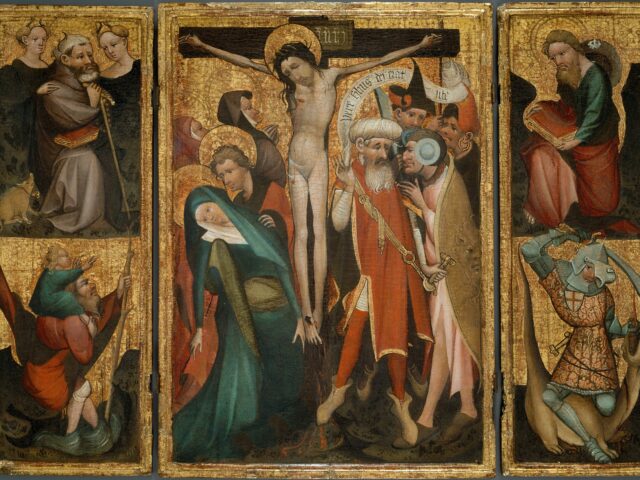
Christians worldwide observe Good Friday today, the day when Jesus Christ died upon a cross on a hill named Golgotha outside a gate in the wall at Jerusalem in Israel, in what Christians believe was a willing sacrifice to bring peace with God to billions across the centuries.
The Bible gives several complementary accounts of Jesus’ crucifixion. For 2,000 years Christianity has taught that sin separates people from the God who created them, and that believing Jesus died on the cross in the place of sinners and was physically resurrected from the dead on Easter Sunday is central to receiving forgiveness from God, as God forgives the sinner on the basis of Jesus’ sacrifice.
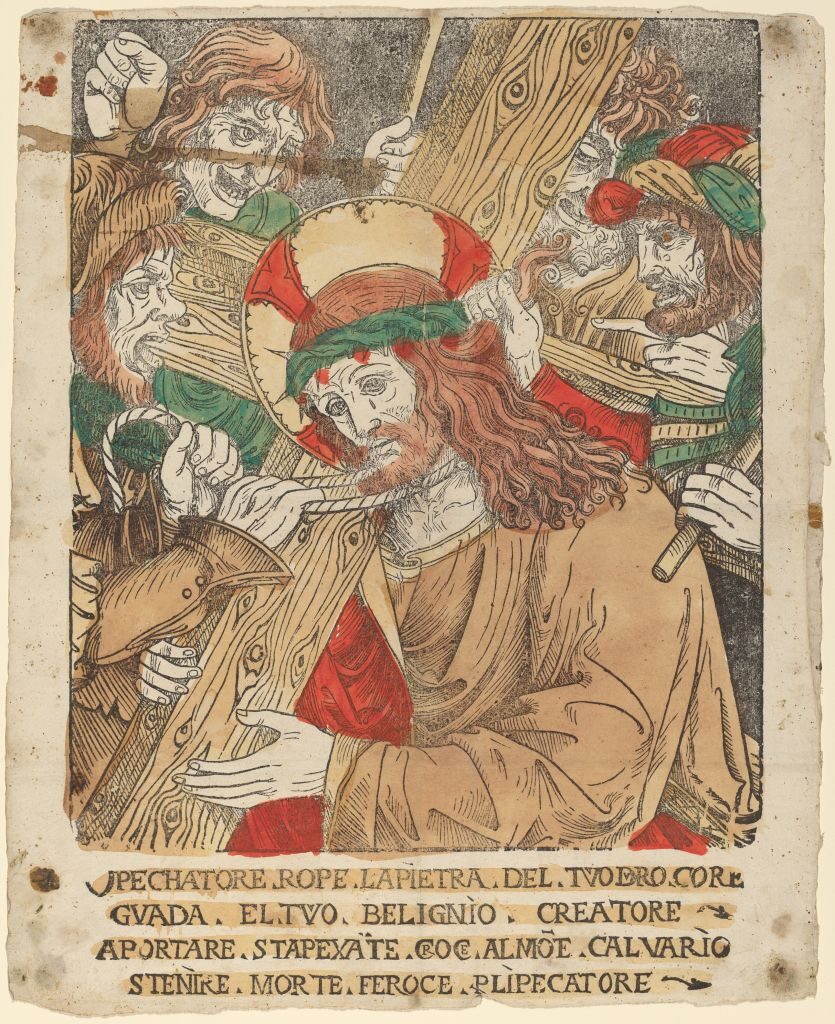
Christ Carrying the Cross, 1510/1525. Artist Unknown. (Photo by Heritage Art/Heritage Images via Getty Images)
From the Gospel according to Mark:
And the soldiers led him away inside the palace (that is, the governor’s headquarters), and they called together the whole battalion. And they clothed him in a purple cloak, and twisting together a crown of thorns, they put it on him. And they began to salute him, “Hail, King of the Jews!” And they were striking his head with a reed and spitting on him and kneeling down in homage to him. And when they had mocked him, they stripped him of the purple cloak and put his own clothes on him. And they led him out to crucify him.
And they compelled a passerby, Simon of Cyrene, who was coming in from the country, the father of Alexander and Rufus, to carry his cross. And they brought him to the place called Golgotha (which means Place of a Skull). And they offered him wine mixed with myrrh, but he did not take it. And they crucified him and divided him garments among them, casting lots for them, to decide what each should take. And it was the third hour when they crucified him. And the inscription of the charge against him read, “The King of the Jews.” And with him were crucified two robbers, one on his right and one on his left. And those who passed by derided him, wagging their headings and saying, “Aha! You who would destroy the temple and rebuild it in three days, save yourself, and come down from the cross!” So also the chief priests with the scribes mocked him to one another, saying, “He saved others; he cannot save himself. Let the Christ, the King of Israel, come down now from the cross that we may see and believe.” Those who were crucified with him also reviled him.
And when the sixth hour had come, there was darkness over the whole land until the ninth hour. And at the ninth hour Jesus cried with a loud voice, “Eloi, Eloi, lema sabachthani?” which means, “My God, my God, why have you forsaken me?” And some of the bystanders hearing it said, “Behold, he is calling Elijah.” And someone ran and filled a sponge with sour wine, put it on a reed and gave it to him to drink, saying, “Wait, let us see whether Elijah will come to take him down.” And Jesus uttered a loud cry and breathed his last. And the curtain of the temple was torn in two, from top to bottom. And when the centurion, who stood facing him, saw that in this way he breathed his last, he said, “Truly this man was the Son of God!”
—Mark 15:16–39 (ESV).
“Christ the sure and steady anchor, while the tempest rages on; when temptation claims the battle, and it seems the night has won. Deeper still then goes the anchor, though I justly stand accused; I will hold fast to the anchor, it shall never be removed.
“Christ the sure and steady anchor, through the floods of unbelief; hopeless somehow, O my soul now, lift your eyes to Calvary. This my ballast of assurance, see His love forever proved; I will hold fast to the anchor; it shall never be removed.”
—Matt Boswell, Christ the Sure and Steady Anchor (2015)
Ken Klukowski is a senior legal contributor at Breitbart News.
‘Exemplum’ Review: A Medieval Morality Tale of God’s Grace in the Age of Social Media Influencers and Cancel Culture
“EXEMPLUM /’ic-zem-pluh m/ n. An example or model. An anecdote that illustrates or supports a moral point, as in a medieval sermon.”
That’s the definition that appears at the start of writer-director Paul Roland’s award-winning debut film Exemplum—a spiritual and psychological thriller that Roland wrote, directed, produced, and starred in—which chronicles one man’s discovery that God’s grace is the only way to “rise above the chaos” of our Fallen world.
The film’s opening narration sets the scene: “In the year of Our Lord, in the latter days of the Great Pandemic, in a city no discernible from the next, there lived a priest—a priest possessed of deep devotion and deep impiety and whose faith would be determined at the crossroads of both. This is his story. This is his exemplum.”
Watch the trailer:
Thus, begins the story of 33-year-old Catholic priest Father Colin Jacobi (played by director Roland). Colin’s “deep devotion” is not to his vocation as a priest of God, but to his desire to be a social media influencer. He dreams of being the new Archbishop Fulton Sheen for the age of YouTube and Twitter.
But unlike the Venerable Fulton Sheen—a man of deep faith and love for God’s people—Colin’s quest isn’t for Christian converts, it’s for clicks. From the start we see him fervently (you might say religiously) checking the number of his Twitter followers and YouTube subscribers. In fact, he has a statue of a thumbs-up “like” button displayed in his room more prominently than any cross or religious image. This is what he worships.
He doesn’t have much luck at first attracting followers to his YouTube show—which he calls “Exemplum”—until he discovers a deeply impious method for creating his morality sermons: he uses the real-life confessions of his parishioners, which he has been illicitly recording.
He stumbles upon this by accident, as he later confesses to his superior at the parish, Father Liam (played wonderfully by Francis Cronin). Colin decides to secretly wire his confessional after hearing about a priest who had been falsely accused of a #MeToo allegation but was cleared when a security camera in his church proved his innocence. But what if this false accuser had claimed the incident had happened in the confessional where no video camera could have saved the day, Colin wonders.
Thus, he decides to secretly tape his confessions for his own protection (at least at first). “I figured the choice was binary: excommunication or reputation. I chose reputation,” Colin said.
Let me pause for the non-Catholic readers and explain the severity of his choice. To break the seal of the confessional is indeed an excommunicative offense, which means that a priest who does this has damned his soul to hell. It is the most serious sin a priest can commit. And, yet, for Colin his “reputation”—the most treasured commodity of every social media influencer—is more important than his eternal soul.
In the confessional, we witness Colin’s intelligence as a counselor, but also his thinly disguised disgust at the foibles and venality of his wealthy parishioners. (After all, this wouldn’t be a morality tale about cancel culture without the smug superiority of a would-be influencer.) We see Colin’s disgust with the serial adultery of a wealthy entrepreneur, and his impatience with the facemask-wearing Karen who hordes all the hand sanitizer during the pandemic, and his annoyance with the online troll who likes to rile people up just for kicks. It’s his frustration with that last character—who he refers to as the “Jester”—that gives him the real inspiration for his YouTube show.
The “Jester” intrigued Colin as a morality tale. “Originally I thought his rage stemmed from a sense of wounded pride,” Colin confesses to Father Liam. “But seeing his internal struggle, I realized that it stemmed from a sense of injustice in the face of disordered chaos. Rage was his only means of control.”
We see the “Jester” in the confessional rage against God: “What kind of a sick psychopath just sits there and lets the most wicked people into high places while the rest of us just suffer under them?”
The viewer is left to wonder if the “Jester” is actually Colin himself raging at God for all the “wicked people in high places” — including his own wealthy and powerful parishioners and his corrupt bishop.
That mention of “chaos”—and specifically “rising above the chaos”—is a phrase we hear throughout the film. We see that Colin is obsessed with controlling the disordered chaos of this Fallen world. Like a character in a Walker Percy novel, Colin has lost faith in everything but the Fall of Man. All he sees is Mankind’s damnation, not God’s salvation.
The “Jester,” whoever he is, gives Colin the idea for his YouTube show “Exemplum.” Now these secretly recorded confessions will be put to use.
“It was as if I had discovered some metaphysical code that God had given only me eyes to see,” Colin confesses to Father Liam. “Suddenly people’s sins, disorder, chaos, and frailty yielded an articulate language that I was translating to the masses with ‘Exemplum’ as my codex…. I collected people’s sins and used them to build ‘Exemplum.’ The very thing I was entrusted to absolve, I froze in time forever.”
He could bring order to their chaotic sins by transforming them up into 10-minute morality tales about the damnation of sinners who have been cancelled from redemption. And with some nice production value, the clicks and “likes” and “hit subscribes” take off. (See the above video from the film showing a sample episode of Colin’s “Exemplum” show.)
Colin gets his wish. He becomes a social media star. He’s the new celebrity priest, and people are lining up outside of his confessional every week.
Soon the Archdiocese of New York wants to make Colin’s “Exemplum” YouTube show a part of the religious studies curriculum for every Catholic school in New York. But then they decide against it, correctly realizing that Colin’s morality tales are too focused on damnation and not redemption.
This is the first blow to Colin’s influencer ambitions. He suffers two more when his own bishop decides that he is gaining too much notoriety and so orders him to stop making his “Exemplum” YouTubes and focus on his relationship with God. When Colin balks at this, the bishop transfers him from his wealthy parish to a poor parish in the middle of nowhere.
What happens next is the heart of the film, as Colin’s wounded pride and rage at these setbacks set him on a path to break each of the three vows every Catholic priest makes; and in the process, we see him descend into a world of blackmail, bribery, mysterious hackers, and even murder. (Without giving away any spoilers, I’ll just say that the film earns its label as a suspense thriller.)
The first vow he breaks is obedience when he disobeys his bishop and tries to go around him to get his YouTube show back. When that fails, we see him break his vow of poverty when he concocts a million-dollar blackmail scheme.
Finally, we see him lose his innocence totally when he breaks his vow of chastity. And it’s after this last one—this final Eden-like Fall from grace—that he literally tosses away his priestly collar and throws his cross in the trash. He even stares down God at the altar and defiantly declares, “I am my own man.”
From the moment he makes this prideful declaration that he is his own man and not a man of God, his Faustian bargain unravels to the point where the film’s Mephistopheles-like character taunts him for his “illusion of control” and his “warped god complex.”
At first impression, you might think this is a nihilistic film about Fallen Mankind in a chaos-plagued world abandoned by God, but you would be very wrong. The counterpart to Colin’s bad priest is a very good priest in the character of his superior, Father Liam. Right before Colin descends down his path of destruction, Liam tries to shepherd him away from the abyss.
In response to Colin’s judgmental moral superiority, Liam paraphrases a quote from Aleksandr Solzhenitsyn’s Gulag Archipelago, in which the great Russian dissident imprisoned in the horrifying evil of the Soviet gulag system wisely observes: “If only there were evil people somewhere committing evil deeds and we could destroy them. But who is willing to destroy a piece of their own heart?”
“To be devils is in our nature, but only by the grace of God are we sanctified,” Liam tells Colin.
I believe that is the real message of the film and its answer to the preening false moralism of cancel culture which revels in the sins of others. The true hero of Exemplum is God who offers us His grace and absolution in the very confessional that Colin desecrated with his social media ambitions. Ultimately, it’s God’s grace that allows us to “rise above the chaos.”
I found Exemplum entertaining and thought-provoking, and I’ve only scratched the surface of its plot twists in this review. But I have a feeling that the long-term significance of Exemplum will be its historic value as the first film of a very gifted filmmaker.
Paul Roland made Exemplum for an astonishingly sparse budget of less than $10,000. And despite its extremely modest production value, the film won Roland a best director award at the Pasadena Film Festival, beating out movies made for ten and even 100 times that amount.
If Exemplum has any weaknesses, they are all due to its shoestring budget (the film could use a color and sound correction). But this is a testament to the talent of this young filmmaker and also a great opportunity for any would-be executive producer or film investor.
If Paul Roland can do this with just $10,000, imagine what he can do with an actual film budget.
Let’s hope—and even pray—that he is given the chance to answer that question.
Exemplum is available now to stream for free on Tubi or to rent in higher-def on VIMEO On Demand.
Watch EXEMPLUM for FREE on Tubi or rent a commercial-free, high-quality stream at VIMEO On Demand.
Rebecca Mansour is Senior Editor-at-Large for Breitbart News. Follow her on Twitter at @RAMansour.

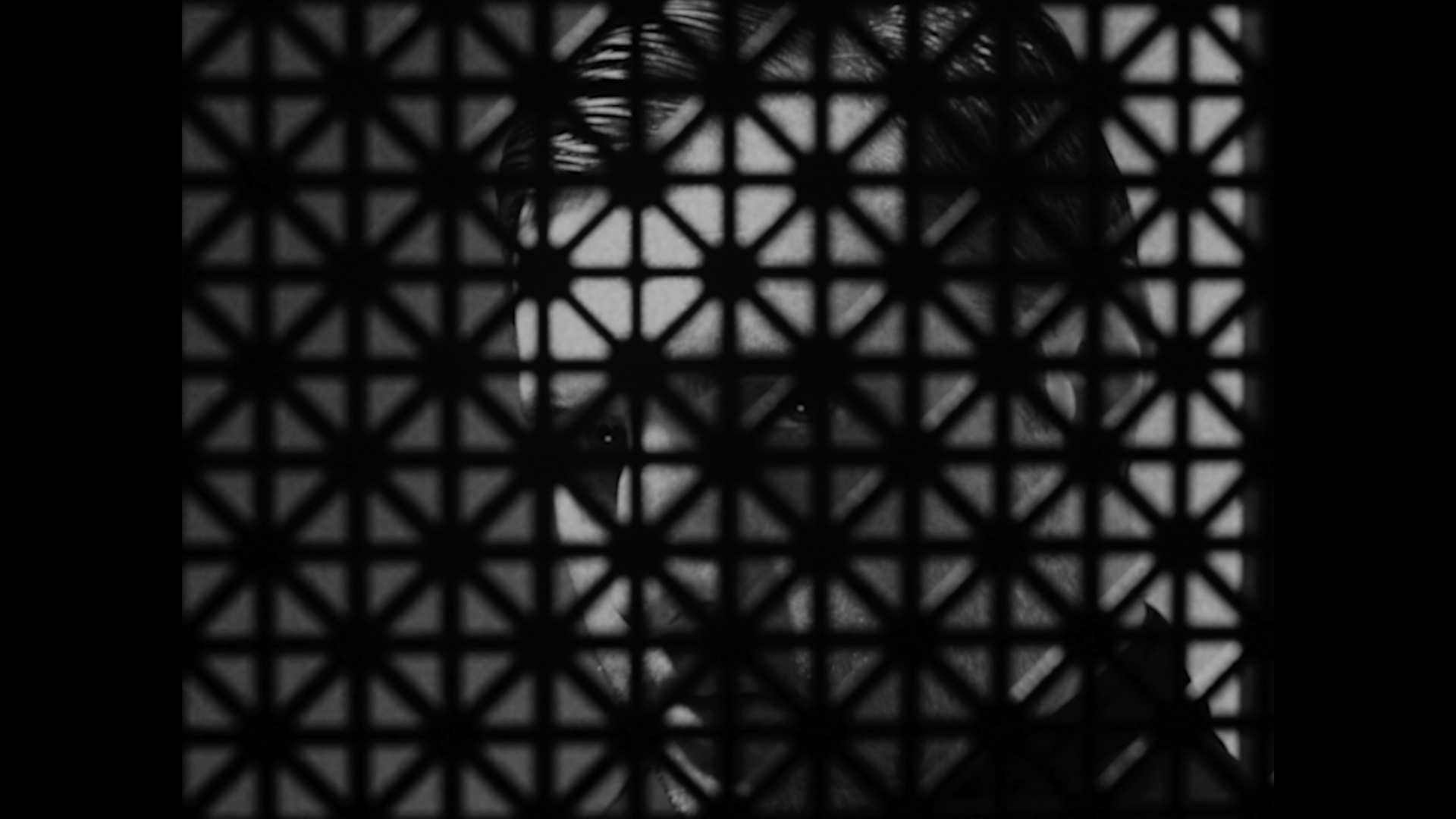
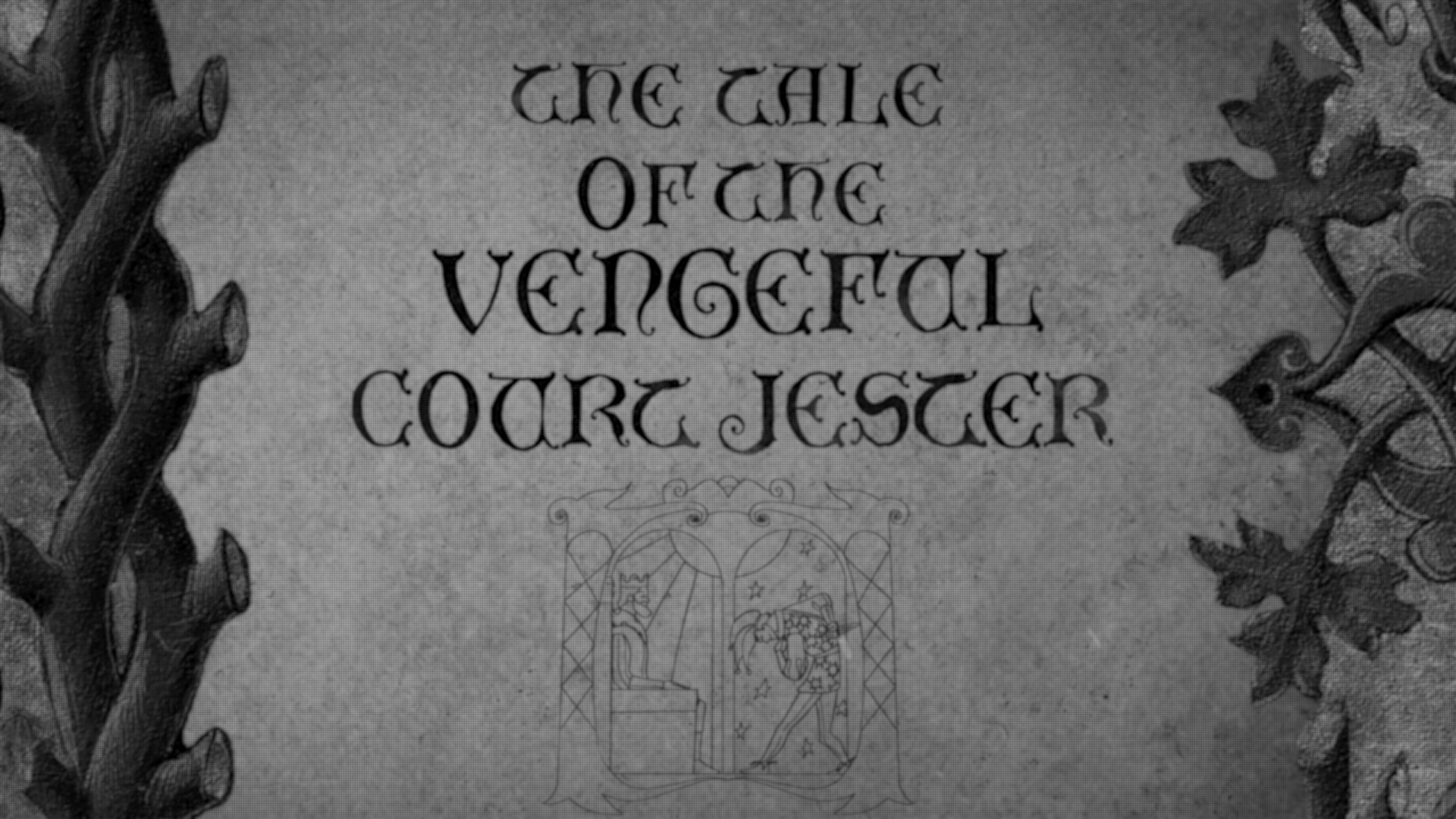
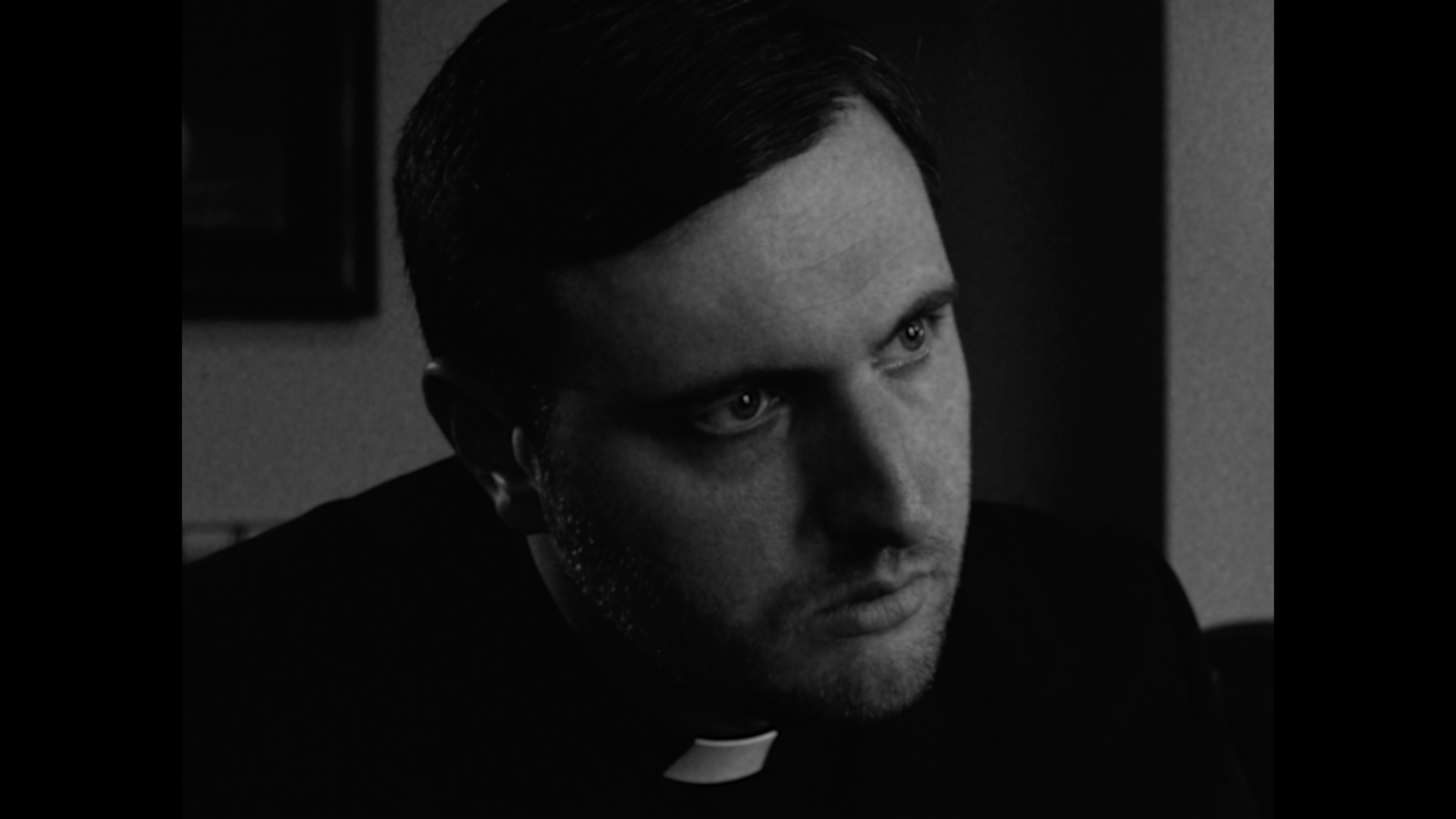
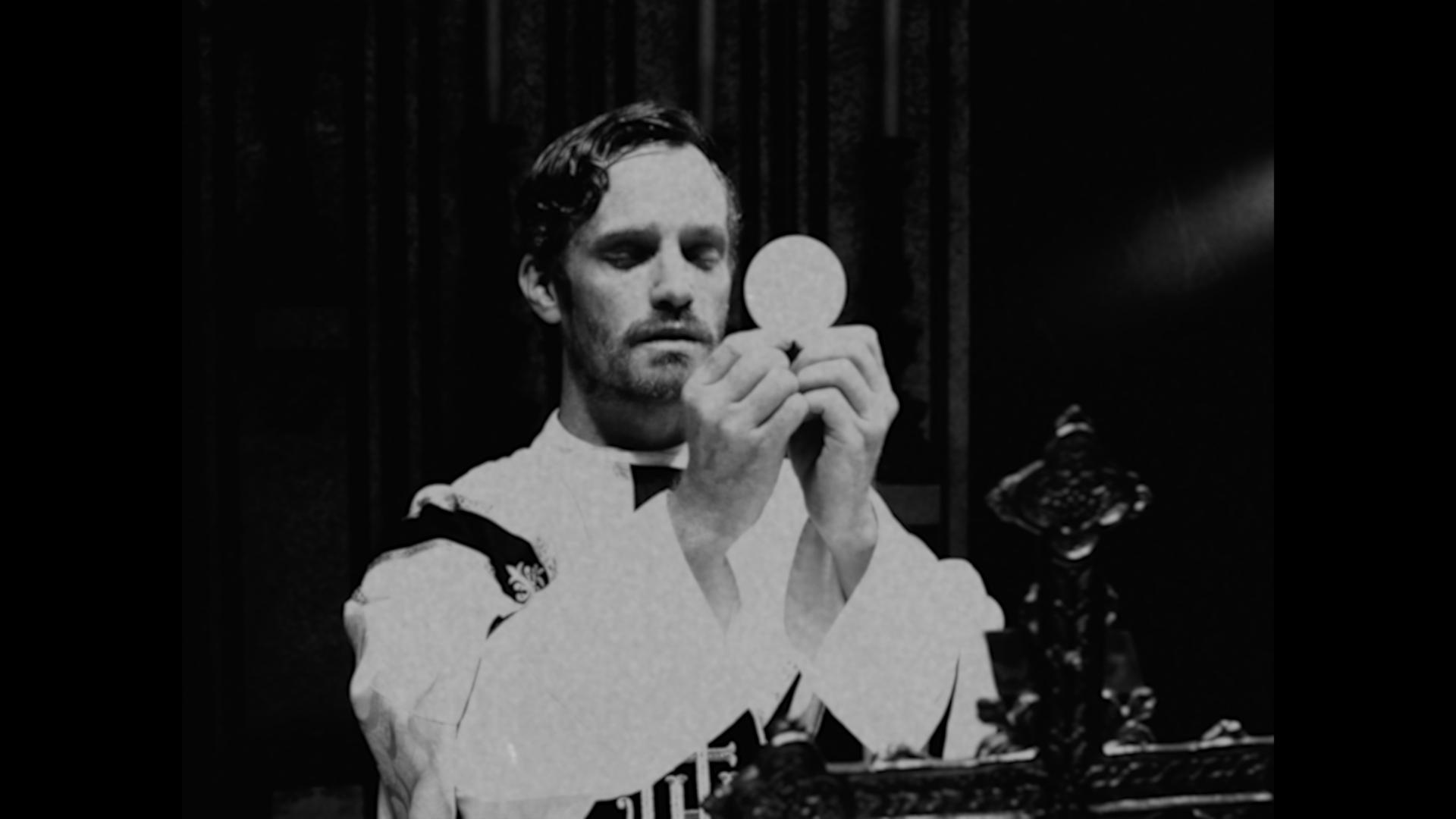

Comments